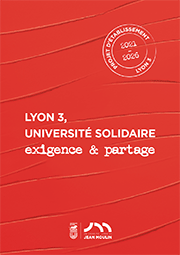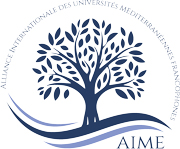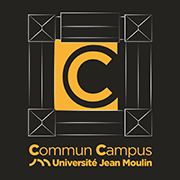AccueilRechercheProgrammes et productions scientifiquesThèsesThèses soutenuesThèses soutenues - 2006-2021Thèses soutenues - 2018
-
Partager cette page
- Recherche,
PRAVDENKO inna
La migration artistique de l’Amérique latine à Paris. Les histoires de neufs participants aux salons de la Société nationale des beaux-arts et leurs peintures
Publié le 30 janvier 2020 – Mis à jour le 30 janvier 2020
Thèse en Etudes Transculturelles, soutenue le 12 décembre 2018.
Au XIXe siècle les peintres latino-américains se rendaient en Europe à la recherche de la perfection artistique. Paris, le centre de l’art moderne, était l’une des principales destinations de la migration artistique intercontinentale. Les artistes de l’Amérique latine sont venus à Paris pour étudier dans des écoles d’art célèbres et pour participer aux salons afin de montrer la qualité de leur travail et tenter de lancer leur carrière sur la scène internationale. Beaucoup d’entre eux sont restés en Europe, mais ont été ignorés par la critique fran?aise et plus tard par les historiographies modernistes. Ces peintres ont été repoussés à la périphérie à laquelle ils appartenaient, quels que soient leurs choix géographiques. Cette thèse explore les trajectoires des peintres latino-américains à Paris qui ont participé aux Salons de la Société nationale des beaux-arts de 1890 à 1899 et revisite leurs positions dans le canon moderne. La recherche commence par l’aper?u général du système d’art des deux c?tés de l’océan Atlantique et va de l’étude de la place des artistes dans les historiographies nationales à l’interprétation de leurs oeuvres. Les multiples facteurs qui fa?onnent la réception de l’art dans la périphérie sont analysés pour redécouvrir les peintres effacés de l’histoire et pour écarter leurs histoires d’un récit dominant dans l’histoire de l’art.
In the nineteenth century Latin American painters were going to Europe in search of artistic perfection. Paris as the centre of modern art was one of the main destinations for intercontinental artistic migration. The artists from Latin American countries went to Paris to study in famous art schools and to participate in the Salon in order to prove their professional status and to begin their careers in the international arena. Many of them stayed in Europe, but they were usually ignored by French criticism and later, by modernist historiographies. These painters were pushed back to the periphery to which they belonged regardless of their geographical choices. The dissertation explores the trajectories of Latin American painters in Paris who participated in the Salons of the Société Nationale des Beaux-arts from 1890 to 1899 and revisits their position in the modern canon. The research starts with the general overview of the art system on both sides of the Atlantic Ocean and goes from the investigation of artists’ places in national historiographies to the interpretation of their paintings. The multiple factors that shape the reception of the art from periphery are brought to light in order to see the painters erased from history and to find the ways to resist the domination of the master narrative in art history.
In the nineteenth century Latin American painters were going to Europe in search of artistic perfection. Paris as the centre of modern art was one of the main destinations for intercontinental artistic migration. The artists from Latin American countries went to Paris to study in famous art schools and to participate in the Salon in order to prove their professional status and to begin their careers in the international arena. Many of them stayed in Europe, but they were usually ignored by French criticism and later, by modernist historiographies. These painters were pushed back to the periphery to which they belonged regardless of their geographical choices. The dissertation explores the trajectories of Latin American painters in Paris who participated in the Salons of the Société Nationale des Beaux-arts from 1890 to 1899 and revisits their position in the modern canon. The research starts with the general overview of the art system on both sides of the Atlantic Ocean and goes from the investigation of artists’ places in national historiographies to the interpretation of their paintings. The multiple factors that shape the reception of the art from periphery are brought to light in order to see the painters erased from history and to find the ways to resist the domination of the master narrative in art history.
Mots-clés : Migration artistique ; Art latino-américain ; peinture du XIXe siècle ; José Tomás Errázuriz ; Albert-?mile Artigue ; Eliseu Visconti ; Diana Cid García ; centre-périphérie ; art moderne ; canon ; Salon.
Keywords : Artistic migration; Latin American art; nineteenth-century painting; José Tomás Errázuriz; Albert-?mile Artigue; Eliseu Visconti; Diana Cid García; centre-periphery; modernism; canon; Salon.
Directeur(trice) de thèse : Gregory LEE
Membres du jury :
- M. LEE Gregory, Directeur de thèse, Professeur des universités, Université Jean Moulin Lyon 3,
- M. CARBALLO Francisco, rapporteur, lecturer, Goldsmiths University of London,
- Mme MUNILLA LACASA María Lía, rapporteur, professores, Universidad de San Andrés, Buenos Aires,
- Mme OTAOLA GONZALES Paloma, Professeure des universités, Université Jean Moulin Lyon 3,
- Mme BAL Mieke, Professor, Amsterdam School for Cultural Analysis, University of Amsterdam.
Président (e) du jury : Paloma OTAOLA GONZALEZ
Documentation
Mise à jour : 30 janvier 2020







